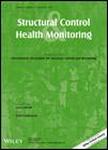版权所有:内蒙古大学图书馆 技术提供:维普资讯• 智图
内蒙古自治区呼和浩特市赛罕区大学西街235号 邮编: 010021

作者机构:Univ Chile Dept Mech Engn Santiago Chile
出 版 物:《STRUCTURAL CONTROL & HEALTH MONITORING》 (结构控制与健康监测)
年 卷 期:2015年第22卷第12期
页 面:1426-1439页
核心收录:
学科分类:07[理学] 0804[工学-仪器科学与技术] 070203[理学-原子与分子物理] 0814[工学-土木工程] 0702[理学-物理学]
基 金:CONICYT [CONICYT-PCHA/Magister Nacional/2013-221320691] Chilean National Fund for Scientific and Technological Development (Fondecyt)
主 题:sandwich structures debonding honeycomb parallel genetic algorithms damage assessment
摘 要:Honeycomb sandwich structures are used in a wide variety of applications. Nevertheless, because of manufacturing defects or impact loads, these structures can experience imperfect bonding or debonding between the skin and the honeycomb core. Instances of debonding reduce the bending stiffness of the composite panel, which causes detectable changes in its vibration characteristics. This article presents a new methodology to identify debonded regions in aluminium honeycomb panels that uses an inverse algorithm based on parallel genetic algorithms. The honeycomb panels are modelled with finite elements using a simplified three-layer shell model. The adhesive layer between the skin and core is modelled using linear springs, with reduced rigidity for the debonded sectors. The algorithm is validated using experimental data from an aluminium honeycomb panel containing different damage scenarios. Copyright (c) 2015 John Wiley & Sons, Ltd.